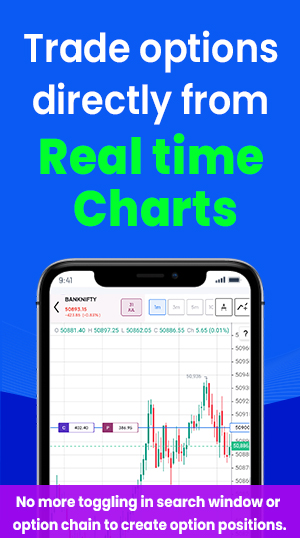Placing orders in the stock market is one of the most crucial points, where you need to be a little cautious. As there are various types of orders in the trading, you should know which type of order you are placing so that you can optimize your order management.
The order could be for buy or for sell but before, you enter into the trading you need to understand what type of order is suitable for you or as per the various market conditions, which order type you should use to make your trade more cost-effective. Hence, we are going to discuss here the types of orders with a few tips on order management systems in the stock market.
Order Meaning in Stock Market
An order in the stock market or trading is a kind of instruction to buy or sell a particular stock or underlying security given by the broker through the stock exchange on behalf of the trader or an investor, using the trading platform.
Also Read: Trading or Investing Which is Better and More Profitable
The orders can placed over the phone by calling to the brokers or manually through an online trading platform or using automated trading systems like Algo trading software. However, phone calling orders have become an outdated process, today most people place orders through their mobile apps or tablets with quick access from anywhere.
Also Read: Algo or Manual Trading Which one is better for the Option Market
The order is categorised into various types based on conditions like price, time or certain restrictions. The different types of orders allow the traders to place the order by choosing from various types as per their trading style and risk management.
Also Read: How to Manage or Do Risk Management in Options Trading
Types of Orders in the Stock Market:-
There are usually three types of orders – market order, limit order, and stop loss order- that are used in trading in the financial market. However, there are more types of orders categorised for the traders to provide them flexibility while placing the orders based on the price, quantity, affordability, risk-taking capability, profitability expectation and investment exposure with certain conditions for better execution and improve their trading journey.
Market Order
This is the most common type of order used by most traders or investors while placing the order. The market order is an order to buy or sell an underlying security at the current market price. Usually, these types of orders are executed as soon as it is placed at the latest price at which rate the underlying security is trading.
However, while placing the order it is not necessary for your order will be executed on the latest price you see. The price could be changed as before you place the order, someone else might place the order at the same price, and then it will executed before you. In a highly volatile market, the price keeps changing at a very fast speed with quick executions.
Also Read: How to Trade in High Volatile Market: Best Trading Strategies
If you want to buy or sell immediately, then a market-type order is best suitable for you. One of the best advantages of market order is it is executed at a very fast speed and your order will be definitely executed as soon as it is laced in the system. However, in market orders, the price will remain the same only when the bid/ask price is correct at the last traded price.
Limit Order
Limit order type is the order placed with a certain limit on price, which means you can place the limit order with a specific price or rate at which if the trading price of the underlying security trades, then only your order will be executed. When the trading price does not reach your limit price, your order will be not executed as you set the minimum or maximum price you set at which you are willing to buy or sell.
Also Read: How to Recover Loss in Option Trading: Tips to Avoid Losses
You can use the limit order to buy or sell the underlying security at a specific price, and on the other side, buyers have to pay a specific price to purchase the particular security. If the price of the underlying security does not reach your limit price, your order will remain pending until it is executed, expires or manually cancel or modify the limit price.
Also Read: How to Stop or Avoid Overtrading in the Stock Market: 8 Tips
A buy limit order represents the buyer is not ready to buy a particular underlying security beyond the limit price set by the buyer. While, in a sell limit order, you specify the limit price below that you are not ready to sell your underlying security. And in both buyers and sellers, unless the price of buyer and seller do not match the price, your order is cancelled.
Stop-loss Order
Apart from the above two most common types of orders, stop loss is another important type of order. The stop-loss type orders are placed to limit the losses of the traders usinga limit price at which the trade position exits if the underlying security does not move expected direction. Stop loss-based orders are one of the best tools for risk management in trading.
Also Read: How to Set Target Price and Stop Loss in Intraday Trading
Stop-loss orders mean you have to set the stop-loss trigger point at which your trade position exits to stop your losses from further movement in the underlying security. If you have placed the order for a long position you have to set the stop loss somewhere below the buying price.
If you entered into a short position, the stop loss point would be somewhere above the selling price. And when underlying security moves against your direction the stop loss order will automatically executed to exit from your trade position. This will help you from major losses and help to trade cautiously in a highly volatile market conditions.
Also Read: What is Short Selling & How Does it Work: Is it Good or Bad
Types of Stop Loss Orders
Just like different types of orders, there are various types of stop-loss orders. These types of stop-loss orders are based on the market orders, limit and trailing stop-loss orders. Let’s find out more about these different types of stop-loss orders.
Stop-loss Limit Order: In stop-loss limit orders when the trigger price of the underlying security reaches the stop-loss order is converted into a limit order.
Stop-loss Market Order: In stop loss market order, the price of the underlying security reaches at the trigger point, and then the stop-loss order is converted into the market order.
Also Read: Golden Rules for Trading in Stock Market: Top 10 Basic Rules
Trailing Stop Loss Order: The trailing stop loss allows you to modify your stop loss as per the movement of the underlying security. Yes, it helps you to set the loss in terms of percentage or maximum value of loss that you can incur in your trade. If the price rises or falls, your stop loss can be modified as per the percentage set to become a new trigger point.
Intraday Order
In trading, this is another type of popular order valid for one day, in which you can buy or sell the security on the same day before the market closes. This means if you have bought any share you have to sell the same or vice versa on the same day.
Also Read: What is Intraday Trading: Is it Profitable, How to Learn& Earn Money
And if you do not close your position, the exchange will automatically square off your trade position before the market closes, as it is designated an intraday order. Placing the intraday order could be risky, especially when the market is highly volatile.
Also Read: 7 Biggest Mistakes To Avoid While Doing Intraday Trading
Delivery Order
Opposite to the intraday, in delivery-based orders, you have to take the delivery of the shares of the underlying company. However, this type of order is very common for investors to accumulate shares with a long-term investment perspective. In these types of orders, you can use the limit or market type of orders to place the order for execution.
Also Read: Things to Consider Before Buying Stocks for Long Term: 10 points
BTST or STBT
Buy Today, Sell Tomorrow or BTST is the type of order placed in anticipation of price movement on the same day or the next day. In this type of order, traders buy the security and sell the same security in the same quantity the next day before the market closes.
This type of order can be also placed to avoid taking delivery of shares in their demat account taking the advantage of T+2 days standard settlement cycle. However, you should be careful as few securities are trading under the new rule of the T+1 settlement cycle, in which you will get the delivery of shares into your demat account on the next day.
Day Order
The order that valid for one day, or you can say if the order is executed same day, otherwise, it is cancelled. This signifies the timeframe rather than the type of order, as the name refers, it is valid for only one day and cancelled if not executed on that day.
GTC Order
This is called “Good-till-Cancelled (GTC)” and is the type of order placed with the condition it will remain in the system until it is cancelled within a specific time frame.
Good Till Triggered (GTT) order
GTT orderstands for Good Till Trigger order allowing the traders to place the order for buying or selling the security at the predefined limit price. These types of orders similar to limit orders, are executed when the price reaches a specified price which is also known as trigger price.
You can place this order for the security eligible for delivery or margin. GTT orders are also not allowed in the intraday trading securities. However, in the derivatives market, you can place GTT orders where the order is executed as a carry forward type order and the contract expiry is considered the expiry of the order.
Also Read: How to Do Intraday Trading: Best Stocks, Charts & Strategies
After Market Order (AMO)
After market order is an order that is placed during non-market hours, which means when the market is closed or after the end of the trading hours. When you place this order, it is executed in the next day or upcoming trading session. You can place this AMO-type order to take advantage of entering into the trade position as soon as the market opens in the morning.
Stop Order
Stop order is sometimes also known as stop order to buy or sell a security when the price reaches a specific price, that’s why it is known as stop price. And when this stop price reaches a stop order, it becomes the market order. However, stop order is generally used for long positions but it can be also used for short positions as per the right stop price.
Order Matching in the Stock Market
You can place the order choosing from various types as discussed above. But do you know how orders are matched in the stock market to make it possible for the execution? Order matching is a critical mechanism that works in the stock market in a such way that buyers and sellers can easily find the best matching orders in the market.
Also Read: What are the Top Factors Affecting the Stock Market in India
Order matching is the process, in which an exchange tries to pair one or more spontaneous buy orders to one more sell orders to make trade executable. Usually, if one buy order is placed with a particular quantity at a specific price and at the same time a sell order with the same quantity at the same price is placed, then the order is executed immediately.
The order matching management system is automated and works itself find the best matching orders by pairing the orders by identifying the buy orders or bids price with equivalent sell order or asks price, to execute them after matching both sides’ quotations.
Also Read: Benefits of Investing in the Stock Market: Advantages of Share Market
Now advanced software and computer applications are used to match and manage the entire order management system with the best accuracy. The orders in the stock market are placed and executed at a very fast speed with the real-time market data visible to every trading platform connected to the stock exchange. The entire order management system in the stock market is automated making it possible for traders and investors to enjoy trouble-free trading.
Order Management System in the Stock Market
An order management system (OMS) in the stock market is the way you can get a clear picture of each trading transaction taking place in the stock market. Using the order management system, the exchange keeps tracking the progress of the orders within the stock market.
Every security eligible for trading is quoted with a particular symbol and security identification number to make it easy for the system to recognize the orders and execute them accurately. Further orders are recognised by their size and price with additional instructions to find the same in the system. Once the order matches the quotation of the buyer and seller, it is executed immediately moving to the next order to find the matching to execute the same.
Also Read: Why You Should Invest in the Stock Market: Reasons & Benefits
In OMS in the stock market, further after order execution, the clearing and settlement of orders take place. The OMS in the stock market also keeps a record of the broker’s customers, their details, and related securities transacted through their broker.
Finally, OMS in the stock market also helps to evaluate the performance of the trading system and profitability earned or loss incurred by the clients with detailed reports. Broking houses and assets management companies use this information and transaction details to analyse the client’s trading patterns and also share with them useful inputs.
Wrapping-up
Overall, in a nutshell, there are various types of orders in the stock market you can use to place while trading. The orders are usually categorized as per the price, time or certain conditions as per the instruction set by the trader or investors. However, broadly, three types of orders are popular in trading – limit orders, market orders and stop-loss orders.
Also Read: Top 10 Different Types of Trading Strategies in Stock Market
Apart from this, the orders are further categorized into various types like intraday orders, delivery-based orders, order till cancellation or after-market orders. The order matching procedure is managed by the stock exchange using the order management system to identify the orders placed in the system and find the right match to execute them.
However, to enjoy the best order management systems in the stock market choose the right online trading platform offered by the best discount brokers in India. Also, check if you get online trading apps with Algo trading to take advantage of high-frequency trading and enjoy the power of automated trading solutions at the lowest brokerage charges.
Also Read: Types of Orders in Option Trading in Algo with Order Placement Tips

















